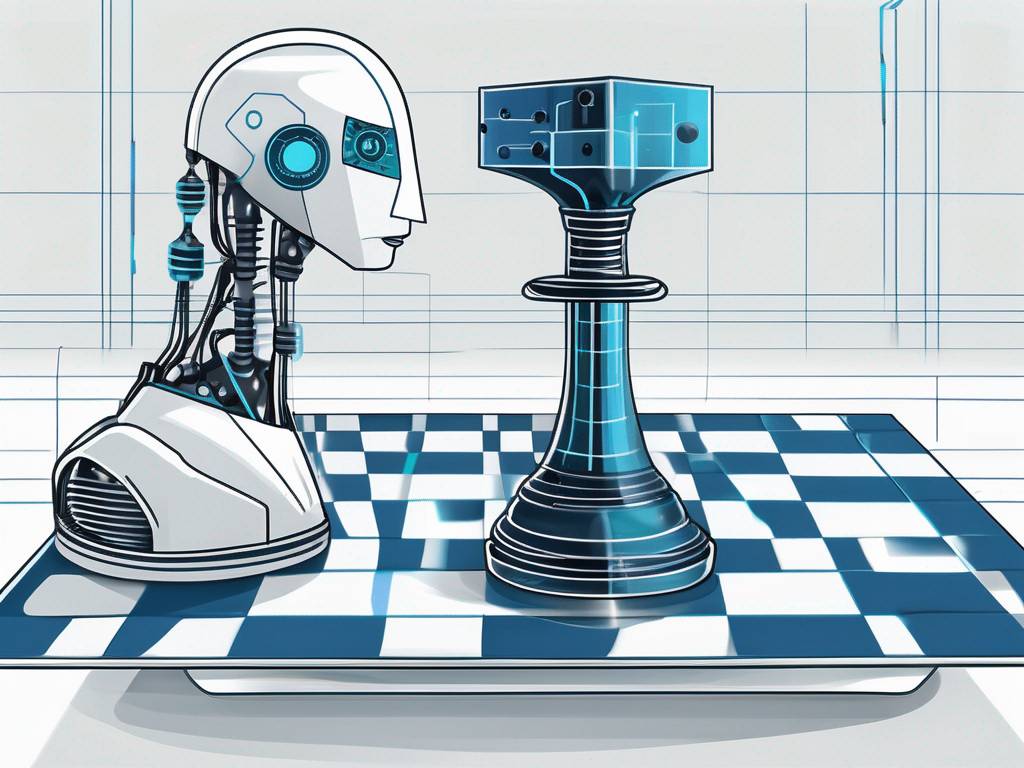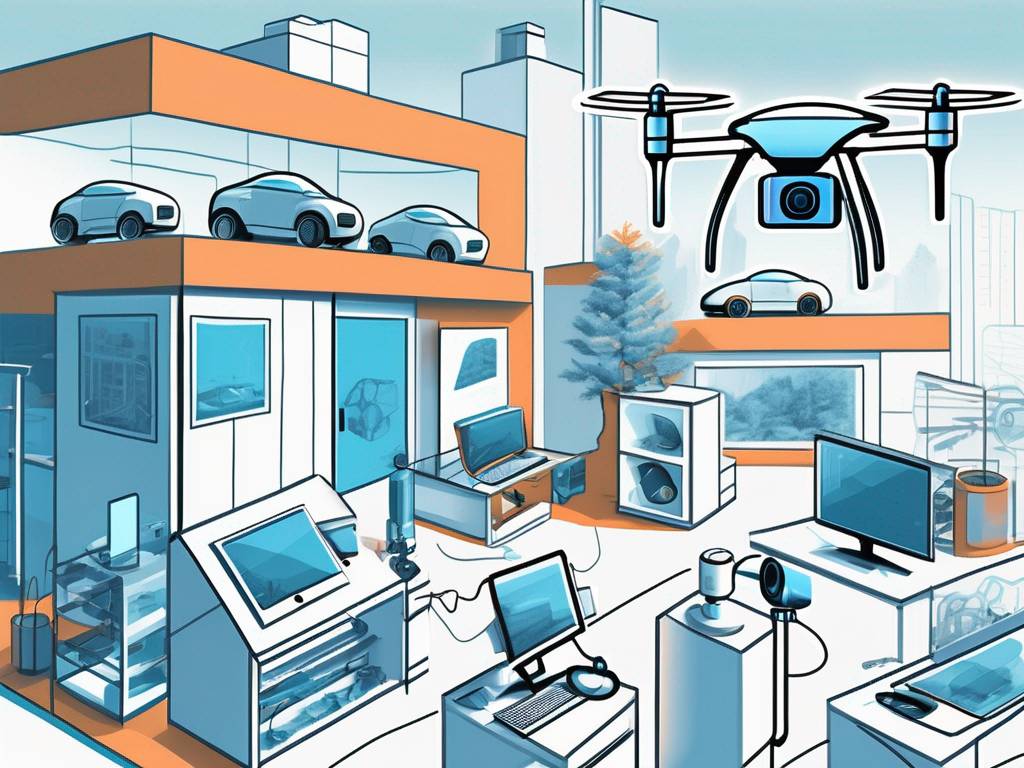AI Art Generation: Is It Ethical? A Complex Question
Artificial Intelligence (AI) has become an increasingly prevalent force in society, transforming various industries from healthcare to finance. One area where AI has had an undeniable impact is in the realm of art. AI art generation, which involves creating artworks using algorithms and machine learning, has sparked a lively debate about its ethical implications. This article explores the process of AI art generation, the ethical concerns surrounding it, different perspectives on the subject, and the wider impact it may have on the art industry. Ultimately, AI art and image generation poses complex questions that require careful consideration.
Understanding AI Art Generation
AI art generation involves using complex algorithms and machine learning techniques to create artworks. This process often begins with training a machine learning model on a large dataset of reference images and existing artworks. The model then learns patterns and styles from these artworks, enabling it to generate images. Through the use of various algorithms and deep learning techniques, AI can produce visually stunning generated images and technically impressive artworks.
The Process of Creating Art with AI
The creation of AI-generated art involves multiple stages. First, a dataset of existing artworks is compiled, ranging from classical masterpieces to contemporary pieces. This diverse range of art provides the foundation for the AI’s learning process. The dataset includes paintings, photographs, and other forms of visual art, allowing the AI to explore a wide array of artistic styles and techniques.
Next, the machine learning model is trained on this dataset, enabling it to understand different artistic styles, techniques, and elements. The model analyzes each image in the dataset, identifying patterns, color palettes, brush strokes, and other visual elements that define each artistic style. It also learns to recognize the emotions and themes conveyed by different artworks, allowing it to generate pieces that evoke similar sentiments.
Once the AI model is trained, it can generate new artworks based on the patterns and styles it has learned. Artists and AI developers work hand in hand during this stage to refine and curate the output of the AI. They provide feedback, make adjustments, and guide the AI model’s creative process to ensure the generated images align with their artistic vision.
Through this collaboration, the AI’s generated artworks can be transformed into refined pieces that possess a balance of technical proficiency and artistic sensibility. The artists bring their expertise and subjective judgment to the table, evaluating the AI’s output and making artistic decisions that enhance the overall quality and aesthetic appeal of the artworks.
The Role of AI in Modern Art
AI art generation has emerged as a significant phenomenon in modern art. It challenges traditional notions of creativity, inspiration and authorship by introducing a new player in the artistic process – the AI algorithm. This algorithmic approach to art creation offers new possibilities for many artists, allowing them to explore uncharted territories and push the boundaries of traditional artistic practices.
AI-generated artworks often exhibit a unique blend of human-like creativity and machine-like precision. They can evoke emotions, challenge conventions, and provoke thought, much like any other artwork created by humans. This blurring of the lines between human and machine creativity has triggered fascinating discussions within the art community.
AI generated images and art also raise questions about the role of the artist in the creative process. While the AI algorithm plays a significant role in generating the artworks, it is ultimately the human artist who guides and shapes the AI’s output. The artist’s intentions, emotions, and personal experiences influence the final result, even when working with AI-generated art.
AI generated images have the potential to democratize art creation. By providing accessible tools and techniques, AI allows individuals with limited artistic skills to express their creativity and produce visually appealing artworks. This inclusivity expands the reach of art and encourages a broader participation in the creative process.
AI art generation is a fascinating field that combines the power of algorithms and machine learning with the creativity and vision of human artists. It opens up new avenues for artistic exploration, challenges traditional notions of authorship, and blurs the boundaries between human and machine creativity. As AI technology continue to advance, the possibilities for AI-generated art are boundless, promising an exciting future for the intersection of art and technology.
The Ethics of AI Art
As AI art generation continues to gain traction, a range of ethical concerns have arisen surrounding its practice. Two significant areas of contention are ownership and copyright issues and concerns about authenticity and originality when using an AI art generator.
One of the key ethical debates surrounding AI art revolves around ownership and copyright. Unlike traditional art, where the artist assumes ownership, the AI algorithm itself plays a role in the generation process. This poses unique challenges in determining rightful ownership and the potential for legal disputes. Should the artist or the AI be recognized as the creator? This question remains unanswered, prompting the need for legal frameworks to address these ownership dilemmas.
The issue of copyright becomes even more complex when considering AI-generated artworks. Since AI algorithms can learn from existing copyrighted images, there is a risk of unintentional infringement. Artists, graphic designers and developers must navigate the fine line between creating something new and violating existing copyright laws. This raises questions about the responsibility of AI artists and the need for clear guidelines in this emerging field.
Authenticity & Originality Concerns
Another area of ethical concern lies in the authenticity and originality of AI-generated artworks. Some argue that since these artworks are generated by algorithms, they lack the same level of human touch and intentionality as works created by humans. Critics claim that AI art generators lack the emotional depth and personal expression that humans bring to their creations.
The question of originality arises when discussing AI art. While AI algorithms can produce visually stunning and unique pieces, critics argue that true originality requires human creativity and imagination. They contend that AI-generated art is merely a replication of existing styles and the techniques of multiple artists, lacking the ability to truly innovate and push artistic boundaries.
The issue of authenticity extends beyond the artistic process itself. With AI art, there is a concern that the artist’s identity becomes blurred. As the AI algorithm plays a significant role in the creation, it becomes challenging to attribute the artwork to a specific individual. This raises questions about the value and significance of authorship in the art world. Many artists frown on artificial intelligence creating images and speak against using AI to generate content.
Overall, the ethical debate surrounding AI art generators is multifaceted and complex. It encompasses questions of ownership, copyright, authenticity, and originality. As AI models continues to evolve and gain prominence, it is crucial to address these ethical concerns to ensure the fair and responsible use of AI in art creation.
Perspectives on AI Generated Art Ethics
There are different viewpoints on the ethical implications of AI art generation. These perspectives include the artist’s viewpoint, the viewer’s perspective, and the AI developer’s standpoint.
Human Artist’s Viewpoint
From the artist’s perspective, AI offers a new tool and medium for creative expression. Artists can explore innovative techniques and merge human creativity with machine intelligence, resulting in entirely new forms of art. AI can act as a collaborator or muse, inspiring artists and expanding the boundaries of their artistic practice. For example, renowned artist Refik Anadol uses AI algorithms to create mesmerizing visual installations that blur the line between reality and imagination.
However, other artists express concerns about the potential loss of artistic identity and the perceived threat to the authenticity of their life’s work, in an increasingly AI-driven artistic landscape. These artists worry that relying too heavily on AI may diminish the uniqueness and personal touch that defines their distinctive style. These artists emphasize the importance of maintaining a balance between human creativity and AI assistance to preserve the integrity of their artistic expression.
The Viewer’s Perspective
For viewers, AI art presents a thought-provoking experience. It challenges preconceived notions about what constitutes art and invites contemplation about the blurred lines between human and machine creativity. Viewers may appreciate the technical skill and aesthetic appeal of AI-generated artworks, such as the intricate patterns created by AI artist Anna Ridler.
Still, questions of emotional resonance and the deeper meaning behind these creations persist. Some viewers may find it difficult to connect with AI-generated art on an emotional level, as it lacks the human experiences and emotions that often shape traditional art. However, others argue that AI art can evoke emotions in its own unique way, offering a fresh perspective and expanding the emotional range of artistic expression.
The AI Developer’s Standpoint
AI developers view AI art generation as a testament to the power and potential of machine learning algorithms. They argue that AI art is a manifestation of the algorithm’s ability to learn and mimic human creativity. Developers acknowledge the need for responsible development and ethical guidelines in the field of AI art to address concerns about rights, ownership, and the impact on traditional artistic practice.
They advocate for transparency and collaboration between artists, developers, and the wider art community. By fostering open dialogue and sharing knowledge, developers aim to ensure that AI art remains a tool for artistic exploration rather than a threat to the artistic process. They actively engage with artists to understand their concerns and work towards developing AI systems that empower artists while respecting their creative autonomy.
AI developers recognize the importance of addressing biases and ethical considerations in AI art generation. They strive to create algorithms that are inclusive, diverse, and considerate of societal values. By actively involving diverse voices in the development process, they aim to mitigate the potential risks and challenges associated with AI-generated images and art.
The Impact of AI Art Generators on the Industry
AI art’s growing presence has profound implications for the art industry, touching upon economic considerations and the influence on artistic creativity.
Economic Implications
AI art generation has the potential to disrupt the traditional art market. As AI-generated artworks gain recognition and popularity, their availability and affordability could significantly impact the distribution and value of art. Additionally, the involvement of AI algorithms raises questions about the pricing and value attribution of AI-generated artworks. The art industry must adapt to these changes and redefine established norms and practices.
Influence on Artistic Creativity
The use of AI in art creation also has an impact on artistic creativity. AI algorithms can inspire and facilitate innovative approaches to art making, enabling artists to experiment with new techniques and aesthetics. At the same time, concerns arise regarding the reliance on AI and the potential loss of traditional artistic skills. Striking a balance between human creativity and technological innovation becomes crucial in fostering an environment where AI art and original art can coexist harmoniously.
Future of AI Art: Ethical Implications
As AI art generation continues to evolve, it raises essential ethical considerations. Discussing potential legal frameworks and establishing ethical guidelines for AI art generation is fundamental in addressing these concerns.
Potential Legal Frameworks
Establishing legal frameworks will help clarify ownership rights and copyright issues, providing artists, AI developers, and the wider art community with clear guidelines. Legal frameworks should consider the unique nature of AI-generated artworks and determine how copyrights, licensing, and intellectual property rights are attributed to original artists. Such frameworks should be flexible enough to accommodate emerging AI technologies while maintaining ethical standards.
Ethical Guidelines for AI Art Generation
Developing ethical guidelines specific to AI art generation is crucial to foster responsible and ethical practices within the field. These guidelines should address issues such as transparency, attribution, and the impact on traditional artistic practices. Collaboration between artists, AI developers, ethicists, and legal experts is crucial in formulating these guidelines, ensuring that the future of AI art is anchored in ethical principles.
AI art generation prompts a complex and multifaceted discussion about its ethical implications. Understanding the process of AI art generation and delving into the ethical concerns surrounding it provides a foundation for a more nuanced understanding of this emerging field. Perspectives from artists, viewers, and AI developers shed light on the different viewpoints and considerations that shape the discourse on AI art ethics.
The wider impact of AI art on the art industry, including economic implications and implications for artistic creativity, necessitates thoughtful exploration and adaptation. As we navigate the future of AI art, developing legal frameworks and ethical guidelines becomes imperative in maintaining ethical standards and fostering a responsible AI art ecosystem. The ethical questions posed by AI art generation prompt us to reflect on the changing landscape of art and challenge our perceptions of creativity and authorship in the digital age.
Questions?
-
What is AI art generation, and how does it work?Toggle questionAI art generation involves using AI algorithms to create visual artworks. It generates images by training models on large datasets, enabling them to generate unique and often surprising pieces.
-
Is AI art generation considered a form of creativity?Toggle questionWhile AI can produce art, the debate on whether it constitutes true creativity is ongoing. AI lacks consciousness and original intent, leading to diverse opinions on its creative capacity.
-
What ethical considerations surround AI-generated art?Toggle questionThe ethical concerns of AI art include issues of authorship, intellectual property, and the potential impact on human artists and the art market.
-
Can AI-generated art be considered as valuable as human-created art?Toggle questionThe value of AI-generated art is subjective and varies. Some appreciate it for its novelty, while others argue that human intention and emotion are integral to artistic value.
-
How can we distinguish between AI-generated and human-created art?Toggle questionDistinguishing between the two may rely on contextual factors, such as understanding the artistic process, knowing the artist's intent, and recognizing unique human expression.
-
What challenges does AI art generation pose to copyright and ownership?Toggle questionThe question of ownership and copyright becomes complex when AI is involved. Determining the creator and rightful owner may require legal frameworks to adapt to new technological challenges.
-
Are there guidelines for ethical AI art creation and use?Toggle questionEthical guidelines are emerging, emphasizing transparency, disclosure, and respecting existing intellectual property laws. However, establishing universally accepted standards remains a work in progress.
-
How does AI-generated art impact the traditional art community?Toggle questionAI art raises questions about the role of human artists, the market value of traditional art, and the potential for collaboration between AI and human creators.
-
Can AI-generated art contribute positively to the art world?Toggle questionAI art has the potential to expand creative possibilities, inspire new forms of expression, and challenge traditional notions of art. However, ethical considerations must guide its responsible use.
-
What does the future hold for the intersection of AI and art?Toggle questionThe future promises continued exploration, innovation, and collaboration between AI and human artists. Balancing technological advancements with ethical considerations will shape the evolving landscape.

 hello@westlink.com
hello@westlink.com  (866) 954-6533
(866) 954-6533  700 N Colorado Blvd,
700 N Colorado Blvd,







Comments